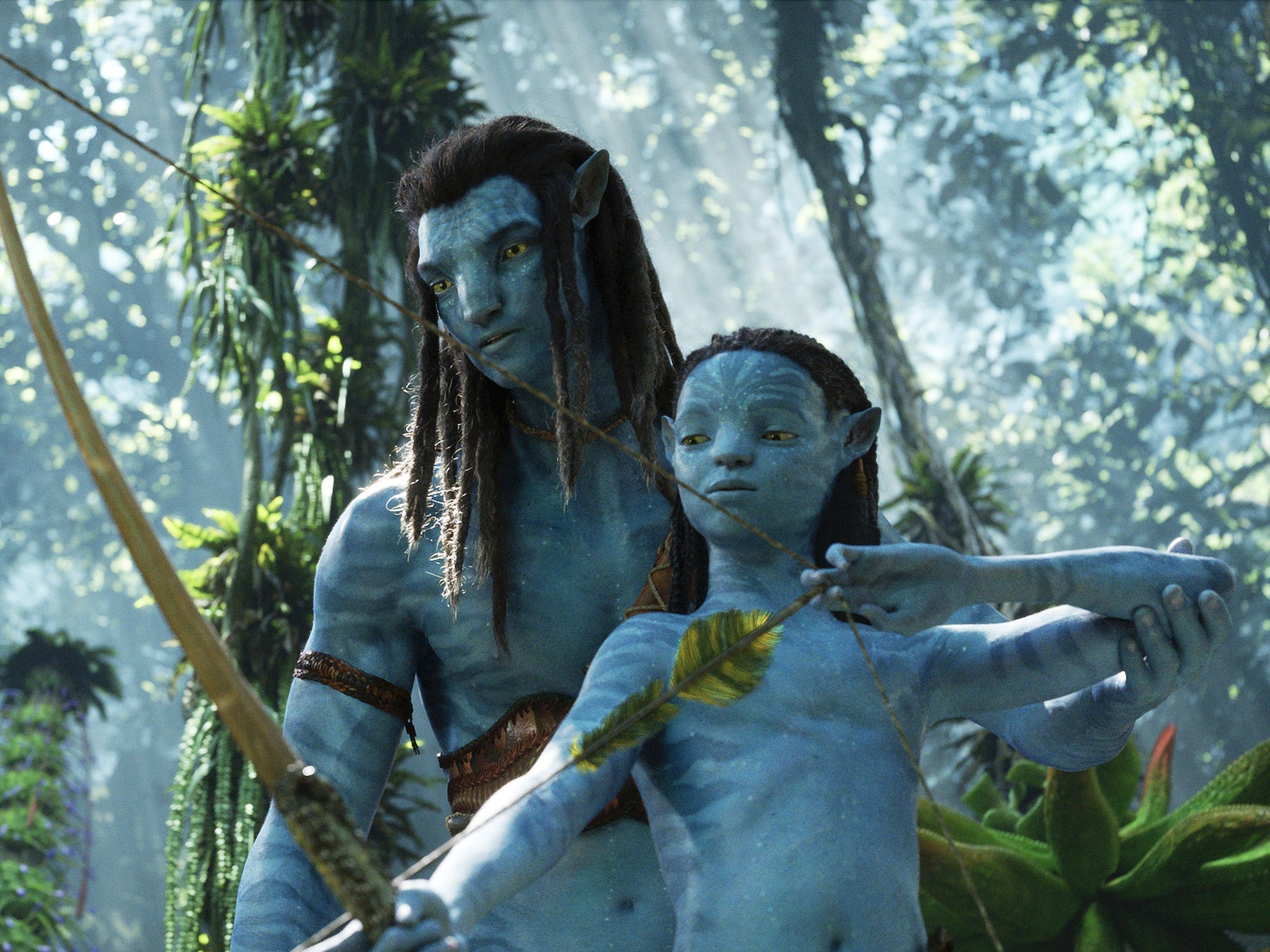Can Avatar: The Way of Water save 3D films from extinction?
James Cameron’s 2009 blockbuster silenced many of those who doubted 3D cinema’s potential, writes Louis Chilton. Thirteen years on, those doubts have returned with a vengeance


There’s a lot riding on Avatar: The Way of Water. It may sound ridiculous to suggest that a sequel to the highest-grossing film ever made could possibly be a gamble – but it is. Thirteen years have passed since Avatar first hit screens. The cinematic landscape has been stripped bare in the interim by declining audiences, bullish competition from streaming services, and ever-dwindling investment in original ideas. James Cameron has kept the budget for The Way of Water under wraps, though has conceded that it was “very f***ing expensive”: according to the veteran filmmaker, The Way of Water needs to become the “third or fourth” highest-grossing film ever made just to break even. Beneath this game of precarious balance sheets and capitalist folly, however, there could be something else at stake: the future of 3D.
It’s almost impossible to talk about 3D films without mentioning Avatar; it is the Citizen Kane of films that require goofy lenses to appreciate. But it was far from the first attempt to harness 3D’s real potential. In fact, filmmakers had experimented with 3D projections since the earliest days of cinema, building up to a brief boom in the 1950s. (The fad was widely considered to have peaked with Alfred Hitchcock’s masterful 1954 thriller Dial M for Murder.) There were drawbacks, though – namely the expense (prints required twice as much film and, often, two projectionists) and the common incidences of motion sickness. By the 1980s, the kinks had started to be ironed out, and, with the rise of Imax screens, a resurgence beckoned. Throughout the 1990s and 2000s, the popularity of 3D films snowballed. There were a lot of kids’ movies and genre fare – Journey to the Centre of the Earth; Superman Returns – and before long, beloved modern (and not-so-modern) classics (Star Wars; Titanic; The Lion King) were being given the ol’ third-dimension spit-shine.
Naturally, the format wasn’t without its naysayers. It was a gimmick, they argued. Maybe, but this gimmick was taking over multiplexes. Avatar was the first movie that looked like it could comprehensively quell the doubters – a huge, hit blockbuster crafted with the 3D experience fully in mind. The immersiveness of 3D did justice to the fantastical landscapes and plantlife of Pandora; even those that lambasted Avatar’s writing and plot had to concede the film’s technical brilliance. 3D had finally arrived.
But the public’s love affair with 3D turned out to be more of a summer fling. There were a few more prominent releases in the format to come, including Peter Jackson’s The Hobbit and Alfonso Cuaron’s Gravity, the latter of which is considered another high point for the format. But as soon as Avatar started leaving cinemas, the enthusiasm for 3D began to wane – even though 3D films are arguably more pervasive than ever. As Cameron noted in a recent interview with Yahoo!, that the number of 3D-capable screens worldwide had ballooned from 6,000 to 120,000 in the past 12 years. “It’s found its level as a consumer choice,” he said. “If people like it, they can see it in 3D. If they don’t, they can see it in 2D.”
It has, however, been years now since a film’s 3D release was any kind of talking point. Blockbusters are seldom screened for critics in 3D; even with films that gross billions of dollars, the fact that they are being released in 3D fails to merit much mention. It seems to no longer make any actual artistic impact. The format is now just part of the whole racket, another optional “add-on” to consider along with whether you want sweet or salty popcorn, or what size fizzy drink to get. Personally, I don’t think “consumer choice” should really enter into art. Given the time, money and technological artistry poured into The Way of Water, I’m not convinced Cameron fully believes it should either.
It doesn’t help, of course, that most of the biggest 3D releases are filmed without the third dimension in mind. It’s often cheaper and more efficient for studios to convert films to 3D after they’ve already been shot. The quality of these conversions varies substantially, with the shoddier end of the spectrum resulting in laughing stocks like 2010’s Clash of the Titans, a film whose appalling 3D cut was disowned by director Louis Leterrier, and which some critics have even accused of “derailing the 3D revolution”. The other downsides have become increasingly obvious too. The ticket prices are higher. The image quality is often inferior. And… those glasses.
But the format never completely lost its potential. Away from the churn of Hollywood, some filmmakers have managed to innovate with 3D for creative ends. Legendary French auteur Jean-Luc Godard utilised 3D for his 2014 film Goodbye to Language, shooting with custom-made cameras and breaking many of the long-held visual conventions of 3D filmmaking. In 2018, Chinese director Bi Gan released A Long Day’s Journey Into Night, a unique dream-like film that changes to 3D halfway through for a stunning hour-long tracking shot.

What shouldn’t be underestimated, either, is the value of 3D as a USP for cinemas. With the so-called theatrical experience increasingly under threat from streaming services, a 3D screening of something like Avatar: The Way of Water is able to offer viewers an experience they are unable to approximate at home. There was, for a brief time during the 2010s a modest market for 3D televisions, but the demand soon fizzled out. (The BBC and Sky gave up on 3D programming pretty rapidly, and production on 3D TVs has since been discontinued entirely.)
Whether The Way of Water will save 3D from extinction remains to be seen. Some might doubtless argue it’s not even in need of saving. But there’s more than ticket sales at stake. When we see Avatar’s lush, watery vistas surrounding us like a big celluloid bearhug, it might remind us – and other filmmakers – why anyone would bother with 3D in the first place. This isn’t a fight for 3D’s short-term financial viability but rather its soul. If Hollywood really wants people to see 3D as more than just cynical upselling gimmickry, it’s going to take more than a pair of stereoscopic glasses.
‘Avatar: The Way of Water’ is in cinemas from 16 December
Join our commenting forum
Join thought-provoking conversations, follow other Independent readers and see their replies
Comments


Bookmark popover
Removed from bookmarks